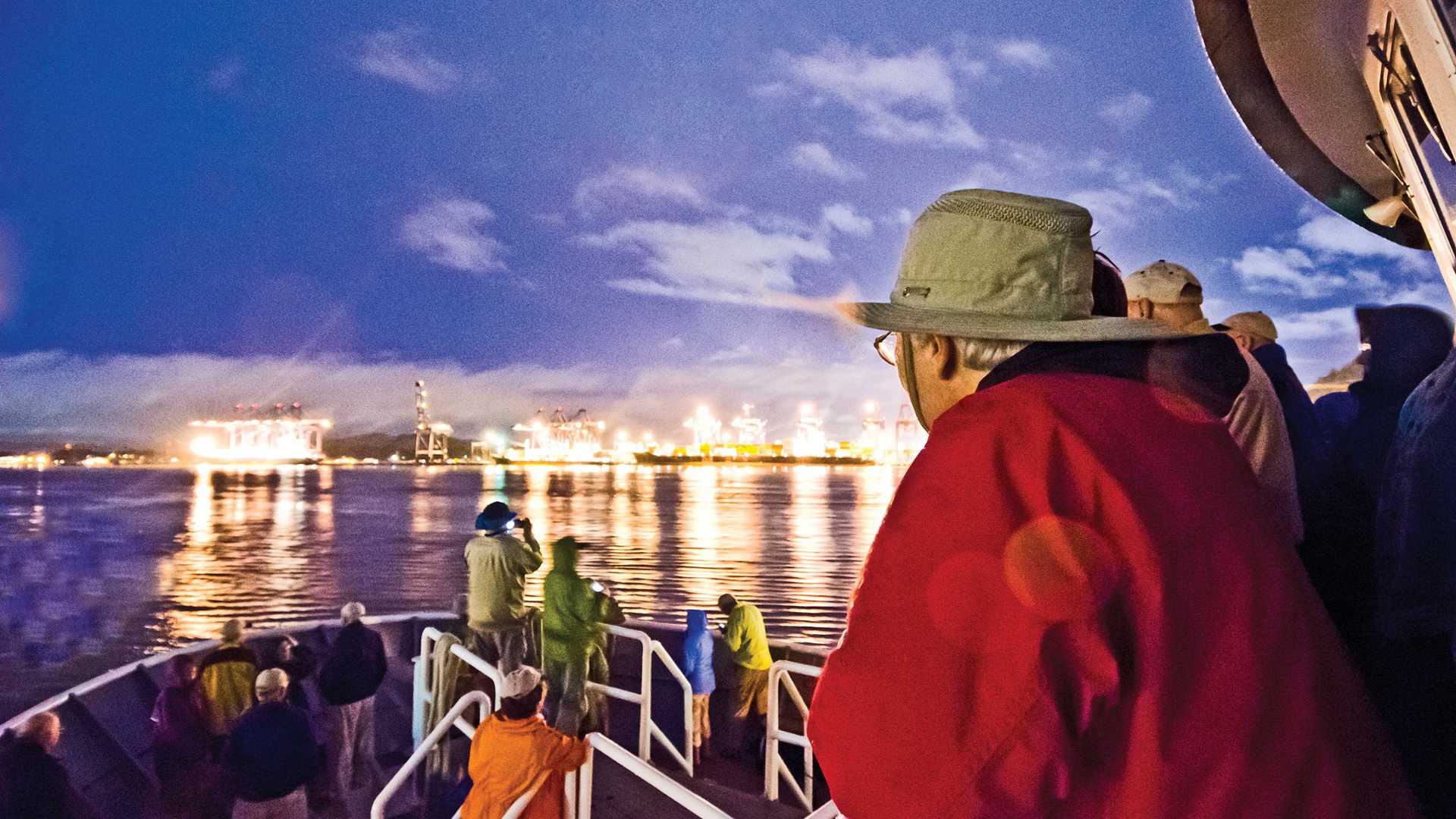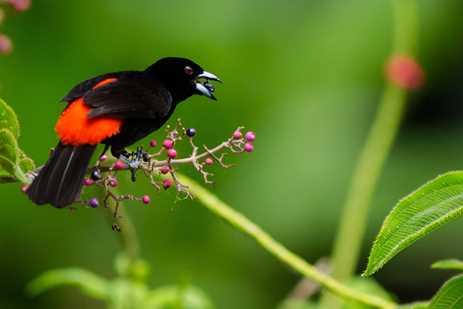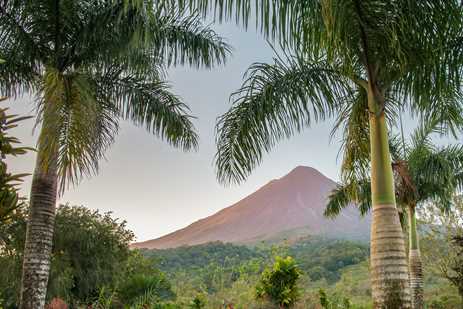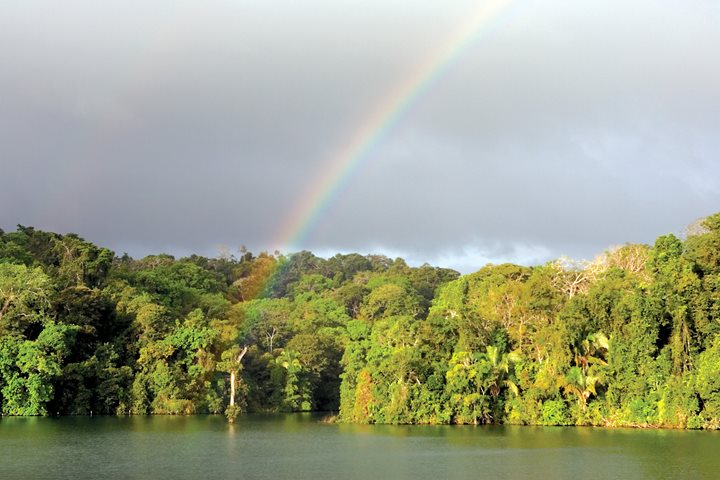The Panama Canal—considered by many to be one of the seven wonders of the modern world—has been a key conduit for international maritime trade since it was completed in the early years of the last century. For Expedition Development Manager Ted Kenefick, crossing the canal for the first time was a surprisingly profound and poignant experience. Here, he answers some frequently asked questions about this modern marvel which is a highlight of several popular Lindblad Expeditions-National Geographic voyages in Central America. Get Inspired By Photos, Videos, Webinars, Stories, And Exclusive Offers. Sign Up
What is the Panama Canal? Why was it built?
Completed in 1914, the Panama Canal—with the Gatun Locks on one end and the Miraflores Locks on the other—created a far shorter, significantly more efficient water route from the Caribbean Sea in the Atlantic to the Pacific Ocean. Dubbed by author, David McCullough as the “moonshot of its era,” the canal, located at the narrowest point of the Western Hemisphere landmass, the Isthmus of Panama, effectively reduced ship travel time from the Atlantic to the Pacific by about 5 months and travel distance by some 8,000 miles. Moreover, ships could now avoid the treacherous Southern Ocean at Cape Horn. The canal was a boon to the world economy and international trade. From both a navigational standpoint as well as from a commercial perspective, the Panama Canal’s impact was and continues to be immeasurable.
The National Geographic Quest beginning to make her way through the Panama Canal.
Where is the Panama Canal?
The Panama Canal bisects the Isthmus of Panama some 620 miles north of the equator and cuts through from the Caribbean Sea to the Pacific Ocean. While many think the geographical positioning of the canal is from the east to the west or vice-versa, the Panama Canal, in fact, runs from the Caribbean Sea in the north to the Pacific Ocean in the south.
Who built the Panama Canal?
The French originally undertook the canal project but it ground to a halt in part because so many workers were dying performing this incredibly perilous work. The United States took over the project on May 4, 1904, under President Theodore Roosevelt. Just over nine years later, on October 10, 1913, at 2:00 pm Eastern Time, President Woodrow Wilson pressed a button at 1600 Pennsylvania Avenue – initiating an electrical current, a signal to light the fuse on the dynamite that would implode the Gamboa Dike. The dike was the approximate midpoint of the 50-mile-long passage which had been constructed to hold back the raging Chagres River. It was the last terrestrial blockage in the canal. Adjacent Culebra Cut, which had been excavated through indescribable toil and hardship was the last dry section of the canal. The cut, “Hell’s Gorge” as dubbed by canal workers, immediately flooded amidst whoops and hollers of all who gathered on the flanks of the waterway on that October day 109 years ago. The Atlantic and Pacific oceans were joined. The Panama Canal was completed and officially opened on August 15, 1914.
A night time view of the canal.
What country owns the Panama Canal?
Colombia and France controlled the region in and around the eventual canal prior to construction. In 1904, the United States took over the construction and completion of the canal, assuming ownership at that time. Under the agreed-upon terms of the 1977 Torrijos-Carter Treaties, full ownership and management were turned over to Panama in 1999. The canal is now operated by the Government of Panama and the Panama Canal Authority.
How long does it take to traverse the Panama Canal?
On average, straight through from one ocean to the other, the Panama Canal transit can be completed in approximately 8-10 hours. On a Lindblad Expeditions-National Geographic voyage, we take our time, stopping to experience the incredible biodiversity of areas in the canal while marveling at the technological wonder that it is.
Is there a best time of year to cruise the Panama Canal?
While it is a fantastic experience any time of year, the dry season from early to mid-December through mid-April is the best period to visit Panama in general. During this time, one can usually expect a dry crossing, but it’s good to remember that this is a waterway that bisects a tropical forest in a tropical region and showers can appear any time of day and any time of year.
What happens on a two-day crossing versus a one-day crossing?
A one-day experience moving through the canal on a straight-through transit allows for wildlife spotting especially in the wilder, less disturbed areas of the canal. Passing these areas, however, can be tantalizing, encouraging one to explore more. With Lindblad Expeditions-National Geographic’s exclusive two-day transit, we actually stop, disembark the ship by Zodiac and explore at Barro Colorado Island in Gatun Lake. Barro Colorado was once a mountaintop cloaked in tropical forest but is now an island after the damming of the Chagres River created Gatun Lake, the largest artificial lake in the world. Barro Colorado is also home to the Smithsonian Tropical Research Institute (STRI) with its mission to “increase and share knowledge about the past, present and future of tropical ecosystems and their relevance to human welfare.” STRI was founded in 1910 and manages several stations along the Panama Canal involved with research, education and community outreach. The goals of one of STRI’s s early projects was to survey and catalog the region’s plants and animals, the denizens of the lowland tropical forest prior to the flooding of the canal.
How much does it cost to pass through the Panama Canal?
The transit fees are based on vessel size and with larger cruise ships, sometimes the number of berths on board the vessels. For personal, private boats under 65 feet in length for example, the tolls can be as low as $2,700. For the largest cruise and cargo ships, fees can range into the hundreds of thousands of dollars per transit.
Guests aboard the National Geographic Quest during a canal crossing.
What makes the experience of traversing the Canal so interesting?
The beauty of the natural world, the intact forest, and its wildlife, combined with the adjacent almost miraculous feat of engineering that is the canal itself, create an unusual but harmonious convergence. An industrial scene is the first impression one gets when stepping out on deck, the cement walls of Gatun Locks rising high above the superstructure of the ship. This was a world of steel beams and high light standards, rivets and cement. The vehicles known as “mules,” worn and as determined as the animal for which they are named, were positioned on tracks on each side of the locks, ready and waiting to pull the ships through I recall the mule operators grabbing a quick nap while waiting for the hydraulic lift of the water to raise the ship to meet the next lock as a Common Black Hawk circled above the din and the metal and the concrete. Later, as the ship plied the narrow Culebra Cut, with forests so well-preserved, they hugged the waterline, and which served to buffer against runoff, we saw several primate species including mantled howler and white-faced capuchin monkeys. Yellow-throated toucans flew across the canal, their bright yellow and chestnut bills conspicuous in the afternoon light and some on board even spotted a three-toed sloth. Unexpectedly, the canal proved to be one of my most memorable wildlife experiences. By the end of the crossing, as the ship was making its way under the Bridge of the Americas, I realized this was a profound and poignant experience.









